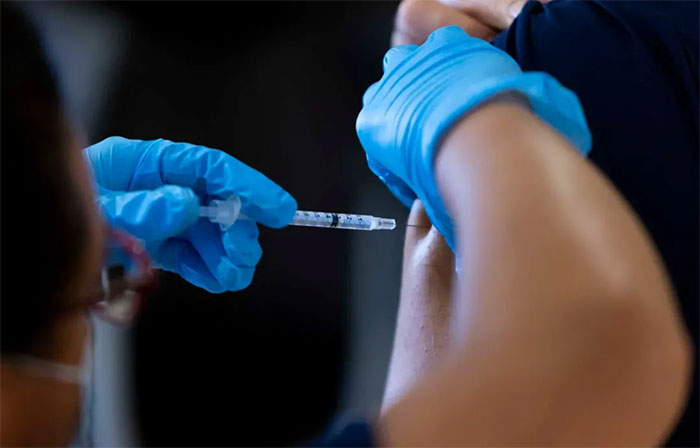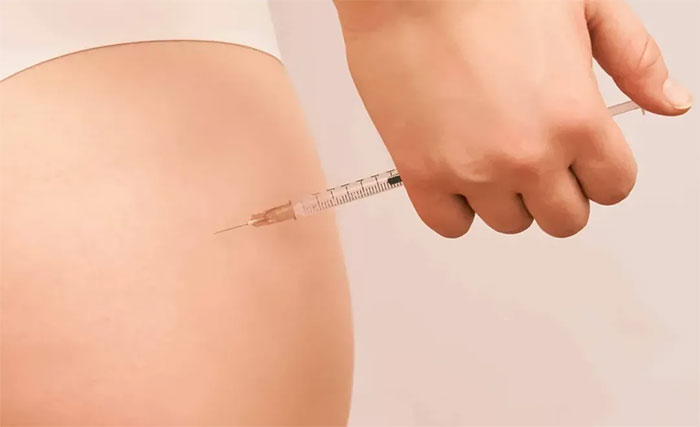Injections are administered at various sites depending on the type of substance or medication used as well as the intended purpose. Repeated injections at the same site can cause tissue scarring and other damage.
You may notice that not all injections are given at the same location. Some are injected into veins in the arm, while others are in the thigh, shoulder, or calf. Why is this necessary? Why not inject into a single area of the body? The answer lies in the type of injectable medication.
There are four main types of injections in the body. Specifically:
- Intravenous Injection: Injection into a vein allows the medication to enter the bloodstream more quickly.
- Intramuscular Injection: Injection into a muscle.
- Subcutaneous Injection: Injection into the innermost layer of skin that contains fat and collagen (subcutaneous layer).
- Intradermal Injection: Injection into the second layer of skin or dermis.
There are also injections given in more challenging locations such as joints, bone marrow, or even in more sensitive areas like our genitals or eyes. However, these types of injections are much less common.
The question that arises in your mind is: “Why are there so many injection sites?” The answer to this lies in the material being injected into the body.
Depending on how the body absorbs the medication or supplement, the injection site will vary.
Intravenous injection or IV delivers medication directly into the bloodstream, allowing it to reach the circulatory system within seconds. Such injections are indicated when rapid delivery of medication is needed.
Antibiotics and antifungals are often administered this way. The well-known painkiller morphine is also injected directly into the vein. However, such injections carry significant risks, as improper administration can damage veins, cause swelling, or lead to bleeding.
For a more well-known example of intramuscular injection, consider the Covid-19 vaccine. This injection is administered in the arm, around the shoulder, and more specifically in the deltoid muscle. This is because the Covid-19 vaccine, along with many other vaccines, is injected into the muscle. Blood continuously flows through muscles, and this blood flow helps distribute vaccine particles more evenly throughout the body.
 Intramuscular injections are less sensitive to heavy medications compared to subcutaneous tissue.
Intramuscular injections are less sensitive to heavy medications compared to subcutaneous tissue.
Intramuscular injections deliver medication into the fascia connective tissue. Due to the strong blood supply, a larger amount of medication can enter the body more easily. Medications injected into the muscle reach the body’s circulatory system steadily without shocking the body. Muscles are also less sensitive to heavy medications compared to subcutaneous tissues.
Other famous examples of intramuscular injections include vitamin B and D shots. Other intramuscular injection sites include the hip, buttocks, and thigh. The muscle chosen for injection depends on the volume of medication. The buttocks and thigh are more suitable than the arm for injecting a large volume of medication without shocking the body.

Subcutaneous injections do not require a long needle as they only need to penetrate the fat tissue in the inner layer of skin.
Subcutaneous injections are often prescribed for diabetic patients. They use these to administer insulin daily. Such injections do not require long needles since they only need to penetrate the fat tissue in the inner skin layer. These convenient injections help deliver a small amount (a few drops) of hormone into the body, and this process carries no risk. Diabetic patients often use insulin pens in their waist and pinch their skin to separate the fat tissue from the muscle.
Subcutaneous tissues do not have many blood vessels, so this injection method allows for the slow and steady release of hormone molecules into the body. It allows for the gradual release of insulin into the bloodstream.
Finally, we come to intradermal injections, which are rarely used to deliver medication into the body.
Such injections are not used to provide drugs or supplements. The needle is less than an inch long and barely penetrates the body. You are likely to encounter this type if you are undergoing a tuberculosis test.
These injections have the longest absorption time and are primarily performed to see if our bodies have a negative reaction to allergens or tuberculin proteins.
Since the injected material is not delivered deep into the body, it is easy to observe the body’s reaction. A rash or redness will appear around the injection site if the body reacts strongly to the allergen. Intradermal injections are primarily performed on the inner surface of the forearm.
Now that you know why proper injection placement is essential, don’t you?


















































